-
 Bitcoin
Bitcoin $114700
-3.36% -
 Ethereum
Ethereum $3619
-6.51% -
 XRP
XRP $2.926
-7.66% -
 Tether USDt
Tether USDt $0.9998
-0.02% -
 BNB
BNB $768.6
-4.90% -
 Solana
Solana $168.2
-7.52% -
 USDC
USDC $0.9999
0.00% -
 Dogecoin
Dogecoin $0.2045
-9.02% -
 TRON
TRON $0.3243
-0.27% -
 Cardano
Cardano $0.7208
-8.45% -
 Hyperliquid
Hyperliquid $39.74
-9.17% -
 Stellar
Stellar $0.3882
-8.79% -
 Sui
Sui $3.481
-11.93% -
 Chainlink
Chainlink $16.52
-9.04% -
 Bitcoin Cash
Bitcoin Cash $556.7
-4.79% -
 Hedera
Hedera $0.2444
-11.40% -
 Avalanche
Avalanche $21.96
-8.51% -
 Ethena USDe
Ethena USDe $1.001
-0.02% -
 UNUS SED LEO
UNUS SED LEO $8.950
0.15% -
 Toncoin
Toncoin $3.425
-2.33% -
 Litecoin
Litecoin $104.4
-5.94% -
 Shiba Inu
Shiba Inu $0.00001212
-7.49% -
 Polkadot
Polkadot $3.630
-6.98% -
 Uniswap
Uniswap $9.165
-10.12% -
 Monero
Monero $306.8
-3.10% -
 Dai
Dai $0.9999
-0.01% -
 Bitget Token
Bitget Token $4.360
-3.43% -
 Pepe
Pepe $0.00001049
-9.59% -
 Cronos
Cronos $0.1352
-8.67% -
 Aave
Aave $256.5
-8.03%
How to calculate the overnight holding fee of Bitcoin contracts?
Bitcoin perpetual contract overnight holding fees (funding rates) are determined by the difference between the contract and spot prices, impacting traders based on their long or short positions and market sentiment; understanding these rates is crucial for managing risk and profitability.
Mar 19, 2025 at 09:49 am
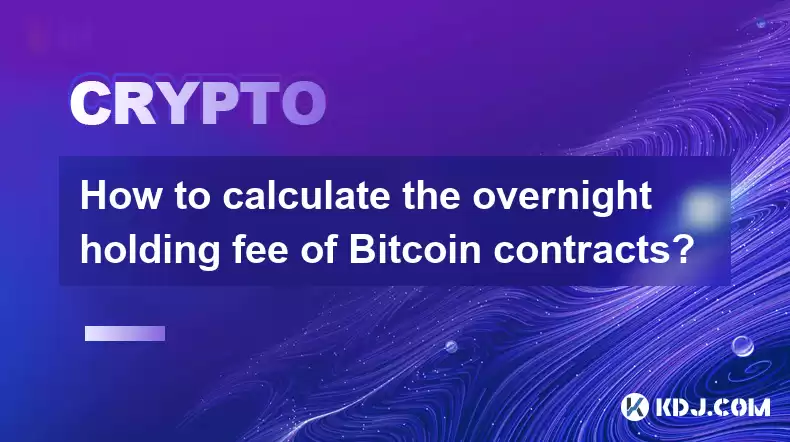
Key Points:
- Overnight holding fees, also known as funding rates, for Bitcoin contracts are determined by the difference between the perpetual contract price and the spot price of Bitcoin.
- These fees are paid or received by traders based on their position (long or short) and the market sentiment.
- The calculation involves understanding the funding rate, contract size, and the number of contracts held.
- Several exchanges provide tools and APIs to facilitate the calculation and automate the process.
- Understanding funding rates is crucial for managing risk and profitability in Bitcoin contract trading.
How to Calculate the Overnight Holding Fee of Bitcoin Contracts?
Trading Bitcoin contracts, particularly perpetual contracts, involves a crucial aspect often overlooked by novice traders: the overnight holding fee, more commonly known as the funding rate. This fee represents the cost or benefit of holding a long or short position overnight. It essentially balances the price of the perpetual contract with the spot price of Bitcoin.
The core principle behind funding rates lies in arbitraging the price difference between perpetual contracts and the underlying spot market. If many traders are bullish and long the contract, driving its price above the spot price, short sellers will receive a funding payment from long holders to compensate them for this price discrepancy. Conversely, if the contract price falls below the spot price due to bearish sentiment, long holders will receive a payment from short sellers.
Calculating the precise overnight holding fee requires several pieces of information readily available on most cryptocurrency exchanges offering Bitcoin perpetual contracts. Firstly, you need the funding rate itself. This is usually expressed as a percentage and varies depending on market conditions. Secondly, you need the contract size, which defines the amount of Bitcoin represented by one contract. Finally, you must know the number of contracts you hold, either long or short.
The calculation itself is straightforward:
- Funding Rate: Obtain the current funding rate from your exchange.
- Contract Size: Identify the contract size (e.g., 1 BTC per contract).
- Number of Contracts: Determine how many contracts you hold.
- Calculation: (Funding Rate Contract Size Number of Contracts) = Overnight Holding Fee (in BTC)
For example, if the funding rate is 0.01% (0.0001), the contract size is 1 BTC, and you hold 10 contracts, your overnight holding fee would be (0.0001 1 BTC 10) = 0.001 BTC. Note that this is a simplified example, and the actual calculation might incorporate other factors depending on the exchange's specifications.
Different exchanges use slightly different methods to display and calculate funding rates. Some may show the rate as an annualized percentage, while others might display it as a per-hour or per-funding-period rate. Always refer to your specific exchange's documentation for the precise calculation method. Many exchanges provide user-friendly interfaces or APIs that automatically calculate the funding fee for you, integrating it directly into your position's profit/loss calculations.
Understanding how funding rates work is paramount for successful Bitcoin contract trading. A positive funding rate indicates that long positions are paying short positions, while a negative funding rate means the opposite. These rates fluctuate based on market sentiment, so monitoring them closely is essential for risk management.
Many exchanges also provide historical funding rate data, allowing traders to analyze past trends and better anticipate future funding costs or benefits. This historical data can be invaluable in formulating effective trading strategies and assessing the potential impact of funding rates on overall profitability. Ignoring funding rates can significantly affect your trading outcomes, potentially leading to unexpected losses. Careful consideration and monitoring are key to successfully navigating the world of Bitcoin contract trading.
Common Questions:
Q: What is the difference between a positive and a negative funding rate?
A: A positive funding rate means long positions pay short positions; a negative funding rate means short positions pay long positions. This reflects the market's sentiment and the price difference between the perpetual contract and the spot price.
Q: How often are funding rates calculated and applied?
A: The frequency of funding rate calculations varies across exchanges. Some exchanges apply them every 8 hours, others every 4 hours, and some even more frequently. Check your specific exchange's terms and conditions for details.
Q: Can funding rates impact the profitability of my Bitcoin contract trades?
A: Absolutely. Significant funding rates, especially if they consistently go against your position, can substantially reduce your profits or even lead to losses, regardless of the price movement of Bitcoin itself.
Q: Where can I find the current funding rate for Bitcoin contracts?
A: Most cryptocurrency exchanges offering Bitcoin perpetual contracts display the current funding rate directly on the contract's trading page. Some exchanges also provide this information through their APIs.
Q: Are there any strategies to mitigate the impact of funding rates?
A: Yes. Strategies include carefully choosing your entry and exit points, considering the funding rate's potential impact on your position, and using hedging techniques to reduce risk. Also, actively monitoring the funding rate and adapting your strategy accordingly is crucial.
Q: Do all Bitcoin contracts have funding rates?
A: No, only perpetual contracts typically have funding rates. Contracts with expiry dates do not have this ongoing fee mechanism. The perpetual nature of the contract requires a mechanism to align its price with the spot market.
Disclaimer:info@kdj.com
The information provided is not trading advice. kdj.com does not assume any responsibility for any investments made based on the information provided in this article. Cryptocurrencies are highly volatile and it is highly recommended that you invest with caution after thorough research!
If you believe that the content used on this website infringes your copyright, please contact us immediately (info@kdj.com) and we will delete it promptly.
- Australia vs Lions: Unleashing Betting Offers and Free Bets for the Thrilling Finale
- 2025-08-01 16:30:11
- Bitcoin, Satoshi, and the Echoes of Ancient Wisdom in DeFi
- 2025-08-01 16:50:12
- ONDO Tokens: Could They Mint the Next Crypto Millionaires?
- 2025-08-01 16:30:11
- Satoshi, Meme Coins, and Substance: A New Era?
- 2025-08-01 16:50:12
- Decoding the Roar: Australia, the Lions, and the Betting Odds
- 2025-08-01 16:55:48
- Bitcoin Price Plummets Amid Trump Tariffs: A Market Sell-Off Deep Dive
- 2025-08-01 16:55:48
Related knowledge
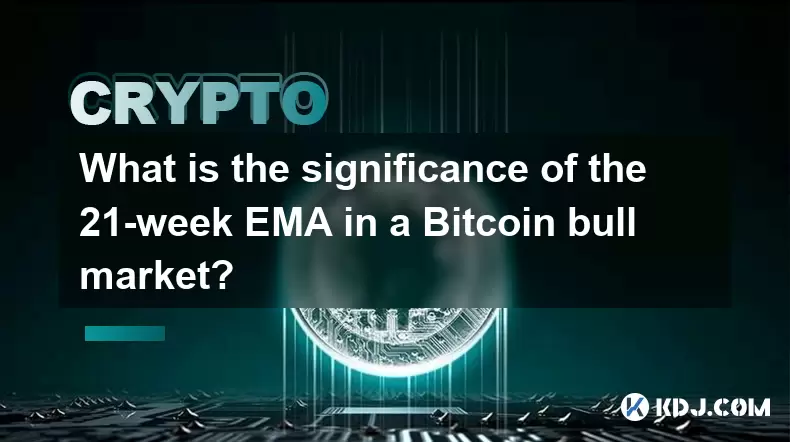
What is the significance of the 21-week EMA in a Bitcoin bull market?
Jul 10,2025 at 06:56pm
Understanding the 21-Week EMA in Cryptocurrency AnalysisThe 21-week Exponential Moving Average (EMA) is a technical indicator widely used by traders a...
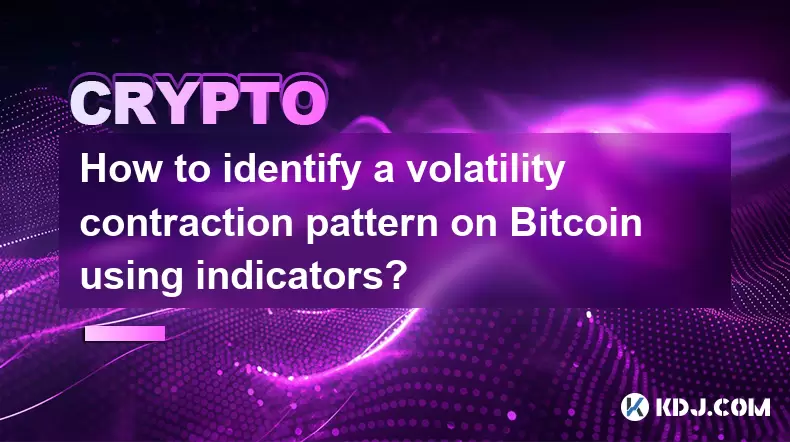
How to identify a volatility contraction pattern on Bitcoin using indicators?
Jul 07,2025 at 07:28am
What is a Volatility Contraction Pattern in Bitcoin Trading?A volatility contraction pattern refers to a phase where the price movement of an asset, s...
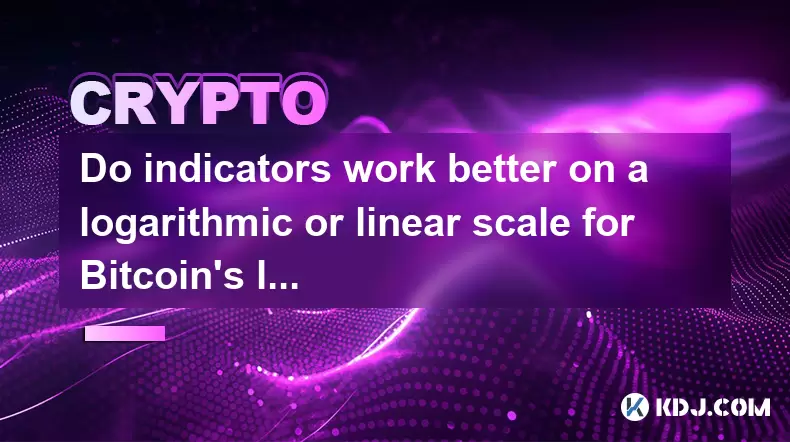
Do indicators work better on a logarithmic or linear scale for Bitcoin's long-term chart?
Jul 08,2025 at 01:42pm
Understanding Chart Scales in Cryptocurrency TradingIn cryptocurrency trading, particularly for analyzing Bitcoin's long-term trends, chart scales pla...

What is the Woodies CCI indicator and can it be used for Bitcoin?
Jul 04,2025 at 05:14pm
Understanding the Woodies CCI IndicatorThe Woodies CCI indicator is a variation of the traditional Commodity Channel Index (CCI), which was originally...
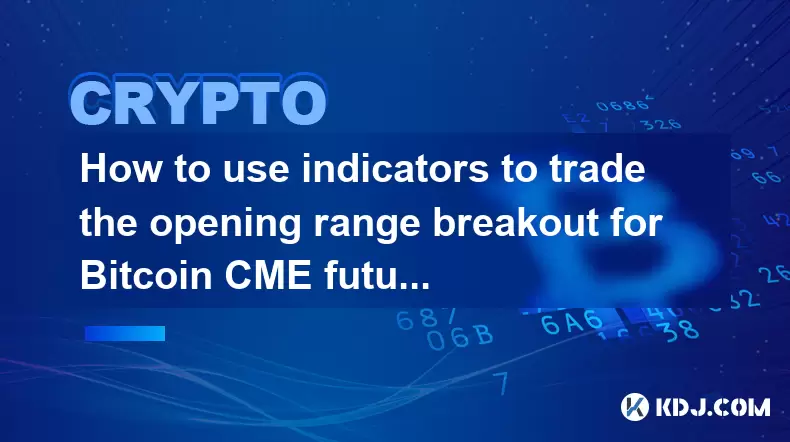
How to use indicators to trade the opening range breakout for Bitcoin CME futures?
Jul 05,2025 at 07:35pm
What Is the Opening Range Breakout Strategy?The opening range breakout (ORB) strategy is a popular trading technique used in both traditional markets ...
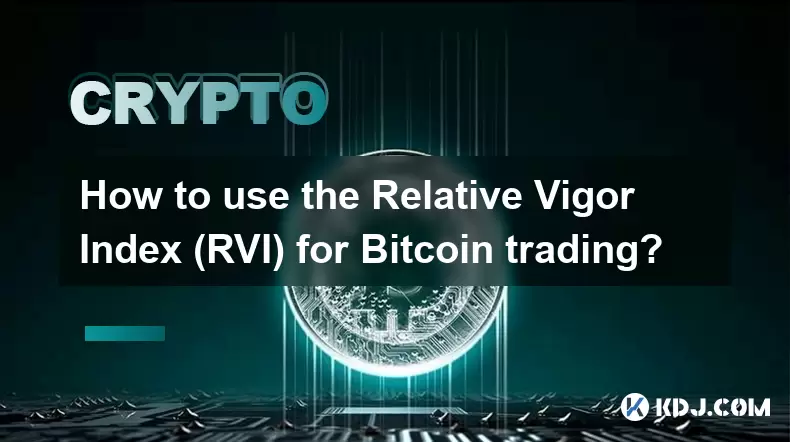
How to use the Relative Vigor Index (RVI) for Bitcoin trading?
Jul 07,2025 at 02:00pm
Understanding the Relative Vigor Index (RVI)The Relative Vigor Index (RVI) is a technical analysis tool used to assess the strength of price movements...

What is the significance of the 21-week EMA in a Bitcoin bull market?
Jul 10,2025 at 06:56pm
Understanding the 21-Week EMA in Cryptocurrency AnalysisThe 21-week Exponential Moving Average (EMA) is a technical indicator widely used by traders a...

How to identify a volatility contraction pattern on Bitcoin using indicators?
Jul 07,2025 at 07:28am
What is a Volatility Contraction Pattern in Bitcoin Trading?A volatility contraction pattern refers to a phase where the price movement of an asset, s...

Do indicators work better on a logarithmic or linear scale for Bitcoin's long-term chart?
Jul 08,2025 at 01:42pm
Understanding Chart Scales in Cryptocurrency TradingIn cryptocurrency trading, particularly for analyzing Bitcoin's long-term trends, chart scales pla...

What is the Woodies CCI indicator and can it be used for Bitcoin?
Jul 04,2025 at 05:14pm
Understanding the Woodies CCI IndicatorThe Woodies CCI indicator is a variation of the traditional Commodity Channel Index (CCI), which was originally...

How to use indicators to trade the opening range breakout for Bitcoin CME futures?
Jul 05,2025 at 07:35pm
What Is the Opening Range Breakout Strategy?The opening range breakout (ORB) strategy is a popular trading technique used in both traditional markets ...

How to use the Relative Vigor Index (RVI) for Bitcoin trading?
Jul 07,2025 at 02:00pm
Understanding the Relative Vigor Index (RVI)The Relative Vigor Index (RVI) is a technical analysis tool used to assess the strength of price movements...
See all articles

























































































